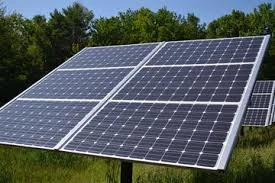Understanding the Dimensions and Efficiency of a Typical 300 Watt Solar Panel for Your Needs
Understanding the Size of a 300-Watt Solar Panel
As renewable energy sources gain traction in our efforts to combat climate change and reduce dependence on fossil fuels, solar power is emerging as a leading option for households and businesses. Among various solar panel options available, 300-watt solar panels have become increasingly popular due to their efficiency and versatility. Understanding the size and dimensions of these panels is crucial for anyone considering solar energy installation.
Understanding the Size of a 300-Watt Solar Panel
When assessing the solar panel's size, it's essential to consider the total area required for installation. A single 300-watt solar panel occupies about 1.6 square meters, meaning a solar power system composed of multiple panels will require a correspondingly larger area. For instance, if a homeowner decides to install a 5 kilowatt (kW) system using 300-watt panels, they would need approximately 17 panels, occupying around 27 square meters. This understanding is vital for homeowners with space limitations or unique roof structures.
size of a 300 watt solar panel

The size of the solar panel also influences its efficiency and performance. Larger panels can capture more sunlight, which results in higher energy conversion rates. However, efficiency is also affected by the material and technology used in the solar cells. Monocrystalline panels, for instance, tend to perform better in lower light conditions and have a higher energy density than their polycrystalline counterparts. As a result, in scenarios where space is limited, investing in higher efficiency panels might yield better overall performance.
Moreover, potential solar panel buyers should consider the weight of 300-watt panels, typically ranging from 18 to 22 kilograms (40 to 50 pounds). This weight is significant for roof installations, as it requires adequate structural support to bear the load over time. Roofing materials and the condition of the roof must be assessed before installation to ensure that safety standards are met.
Additionally, layout and orientation play vital roles in optimizing solar panel performance. Panels should ideally be oriented towards the sun's trajectory to maximize energy absorption throughout the day. The geographical location and angle of the installation site can also affect how much sunlight the panels receive, thereby influencing their efficiency.
In conclusion, the size of a 300-watt solar panel is an important consideration for anyone looking to harness solar energy. With dimensions typically around 1.6 meters by 1 meter, these panels offer a manageable footprint for residential or commercial installation. However, prospective buyers must consider their space, weight considerations for structural integrity, and performance efficiency. As technological advancements continue to change the solar landscape, understanding these factors will help consumers make informed decisions when investing in solar energy systems. With proper planning and consideration, solar panels can provide sustainable energy solutions that contribute positively to both the environment and energy independence.
-
Unlocking Energy Freedom with the Off Grid Solar InverterNewsJun.06,2025
-
Unlock More Solar Power with a High-Efficiency Bifacial Solar PanelNewsJun.06,2025
-
Power Your Future with High-Efficiency Monocrystalline Solar PanelsNewsJun.06,2025
-
Next-Gen Solar Power Starts with Micro Solar InvertersNewsJun.06,2025
-
Harnessing Peak Efficiency with the On Grid Solar InverterNewsJun.06,2025
-
Discover Unmatched Efficiency with the Latest String Solar InverterNewsJun.06,2025







